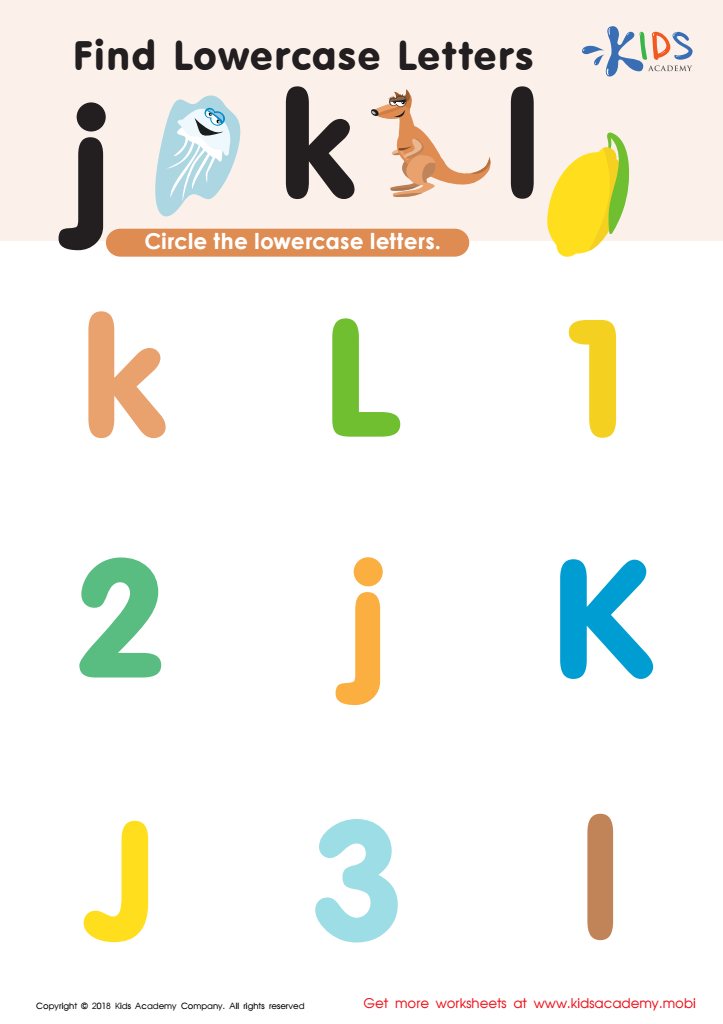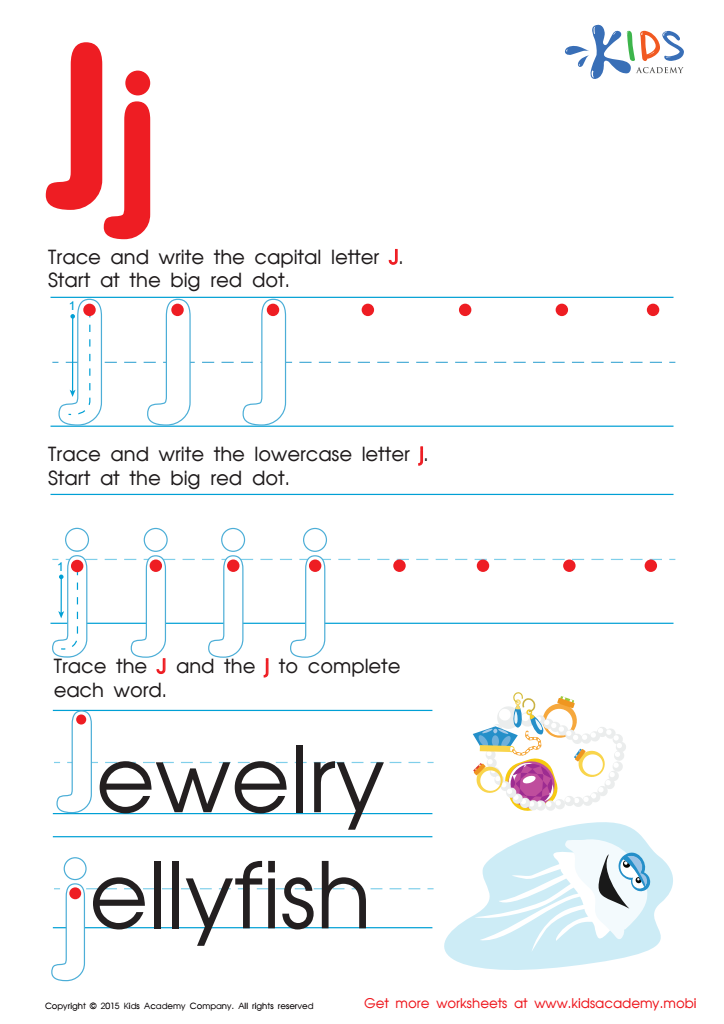Fine motor skills development Normal Letter Recognition Worksheets for Ages 3-4
3 filtered results
-
From - To
Boost your child's fine motor skills with our Normal Letter Recognition Worksheets for Ages 3-4. Designed to enhance early education, these engaging printables help young learners. They accurately identify and write letters, strengthening crucial hand-eye coordination and finger dexterity. Each worksheet features exciting activities like tracing, coloring, and more, making learning a fun and interactive experience. Perfectly suited for preschoolers, our worksheets nurture foundational skills critical for academic success. Explore our collection today to support your child's growth and confidence in mastering the alphabet through effective fine motor practice.


Find Lowercase Letters j k l Worksheet


Letter J Tracing Page


Letter D Coloring Sheet
Fine motor skills development and normal letter recognition are crucial aspects of early childhood education, specifically for children aged 3-4 years. Fine motor skills involve the coordination of small muscles, particularly in the hands and fingers, and are essential for tasks such as writing, buttoning clothes, and using utensils. At this age, children are growing rapidly and their fine motor development lays a foundational role in performing daily activities efficiently and independently.
Parents and teachers should prioritize fine motor skills to ensure a child’s smooth transition into more complex tasks. Engaging activities like cutting with scissors, molding clay, or coloring within lines can considerably boost their proficiency. Developing these skills at an early stage also contributes significantly to a child’s confidence and self-esteem as they gain more control over their actions.
Simultaneously, normal letter recognition equips children with the fundamental literacy skills. Recognizing and differentiating between letters paves the way for reading and writing, fostering early literacy and academic success. Being familiar with letters boosts phonemic awareness, allowing children to understand how letters and sounds form words. This fluency is instrumental in nurturing their ability to read independently and comprehend complex texts in the future.
Overall, focusing on fine motor skills and letter recognition for children aged 3-4 provides a dual benefit of promoting physical dexterity and essential cognitive functions, setting them on a path for academic and personal success.
 Assign to My Students
Assign to My Students

















